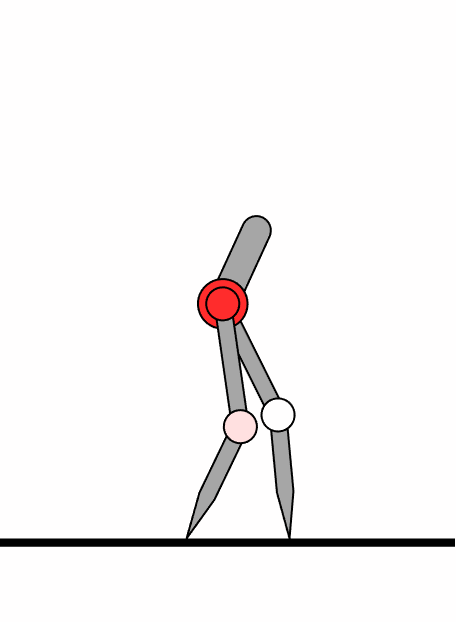

In the dynamic field of robotics and control systems, achieving precise joint angle management is essential for enabling natural and stable movements in bipedal robots. My project focuses on developing a comprehensive simulation of a bipedal robot, utilizing Proportional-Integral-Derivative (PID) controllers to effectively regulate the hip, knee, and ankle joints. This simulation aims to emulate the complexities of human walking by accurately following predefined joint trajectories, ensuring coordinated and balanced locomotion.
The main goal of this endeavor was to design an intelligent control mechanism capable of autonomously maintaining desired joint angles over extended durations. By integrating PID controllers for each joint, the system dynamically adjusts control torques based on real-time feedback, reducing the gap between the intended and actual joint positions. Utilizing Python as the core programming language, the project employs libraries such as NumPy for numerical operations, Matplotlib and Seaborn for data visualization, and SciPy for solving the differential equations governing joint dynamics.
A well-structured simulation framework models the physical properties and dynamic behaviors of each joint, ensuring realistic responses to applied torques. The application of numerical integration methods facilitates the continuous updating of angular velocities and positions, allowing the robot to adapt its movements instantaneously. Through iterative testing and visualization, the project demonstrates the efficacy of PID controllers in achieving precise joint angle tracking, highlighting the system's capacity to sustain stable and lifelike walking patterns.
This project highlights my proficiency in control systems engineering, dynamic modeling, and simulation development. It showcases my ability to leverage advanced programming tools and libraries to design and implement robust control algorithms. By successfully simulating the joint movements of a bipedal robot, I have demonstrated the capability to translate theoretical control principles into practical applications, establishing a solid foundation for future advancements in robotic locomotion and prosthetic technology.
View on Github